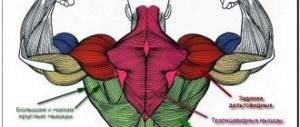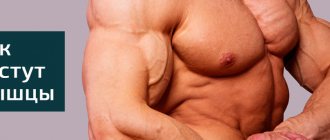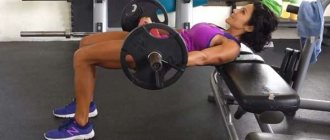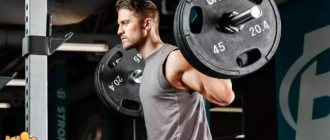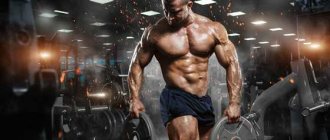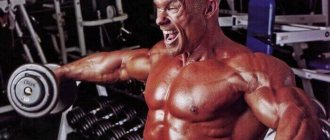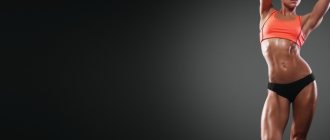What is pumping and why is it needed?
Pumping is an increase in muscle volume due to increased blood flow, provoked by performing strength exercises with moderate working weight and in a high-repetition mode (15 or more repetitions for each approach).
In bodybuilding, training is most often used to pump the muscles of the arms and chest. The use of pumping is the main component of “beach training”, since it is one of the easiest ways to make muscles large and voluminous. It should be noted that the pumping effect can be significantly increased through the use of special sports nutrition.
Types of pumping and effects
There are different types of pumping . They all have a purpose and are divided as follows:
- cosmetic;
- productive;
- pharmacological.
Cosmetic pumping is used for photo shoots; its meaning is short-term exercises to emphasize muscles and achieve maximum plumpness. The effect of pumping is generally short, so fashion models use this method immediately before filming.
Productive pumping is an exercise practiced in gyms during weight loss. It allows you to get rid of the maximum amount of water, and by maintaining a proper diet - from fat.
Pharmacological pumping is based on the use of pharmacology and sports supplements.
How does pumping work?
Pumping training affects the energy depots of the muscles, each time increasing their volume more and more.
First, high-repetition training depletes glycogen stores, and when carbohydrates are again available, glycogen accumulates above the previous level. Essentially, pumping causes muscles to store more energy, optimizing the ability of sarcoplasm and muscle cells to store glycogen and creatine phosphate. At the same time, pumping increases fluid retention in the muscles, since water molecules are necessary for energy synthesis processes.
Disadvantages of pumping training
It should be noted that the pumping effect is largely short-term and purely cosmetic - without proper training and without carbohydrate loading, the muscles literally “deflate”, since during pumping the muscle tissue itself practically does not grow and does not increase strength.
It is extremely important to alternate pump training with full strength training for hypertrophy (that is, high weight and low repetitions). Only in this case will it be possible not only to visually enlarge the muscles, but also to record this effect due to their growth.
Pumping
“Pumping” comes from the English word “pumping” - to pump, fill. This is the name for the load at which the muscles swell due to the influx of increased amounts of blood. Usually they say “on the pump”. The technique consists of frequent repetitions of monotonous movements on a certain part of the body, accompanied by a feeling of “bursting” with blood from the inside of the muscles in the area being worked.
Muscle swelling also occurs due to the release of sugar ( glycogen ), which binds water. The mass of mitochondria and the content of cellular fluid increases. The cell membrane becomes more permeable, it begins to absorb everything like a sponge, and then it begins to “burst” from the inside.
One of the most famous fans of pumping was (and maybe still is) Arnold Schwarzenegger. In his book on the basics of bodybuilding, the famous actor and athlete called the technique “the best satisfaction you can get in the gym.”
There are three types of pumping:
1) productive
It is achieved in a simple natural way during training in the gym: in particular, working with slow muscle fibers, stretching the fascia. The goal is to stimulate muscle growth.
2) cosmetic
Just like cosmetic renovations in an apartment - done before selling (read before competing at competitions, photo shoots). The goal is to give maximum volume to the muscles and a more defined, sculpted appearance. On average, it gives a visual increase in muscles by 15-20%.
3) pharmacological
Achieved using chemistry.
Is it possible and necessary to eat before bed?
So what does pumping give us?
- Increased elasticity (fascial stretching)
Connective tissues form a dense cover around the muscle, preventing damage from shocks, vibrations and other influences. During training, it gradually stretches, building up a reserve of length that it can endure without tearing.After training in the gym and working a certain muscle well, the cover stretches, but after training it again “keeps” the muscle in check. Thus, the connective tissue of the sheath (fascia) works like a spring, either squeezing or unclenching the muscle.
- A visual increase in volume
is achieved due to a rush of blood to the trained muscle. You will look more sporty, but not for long
